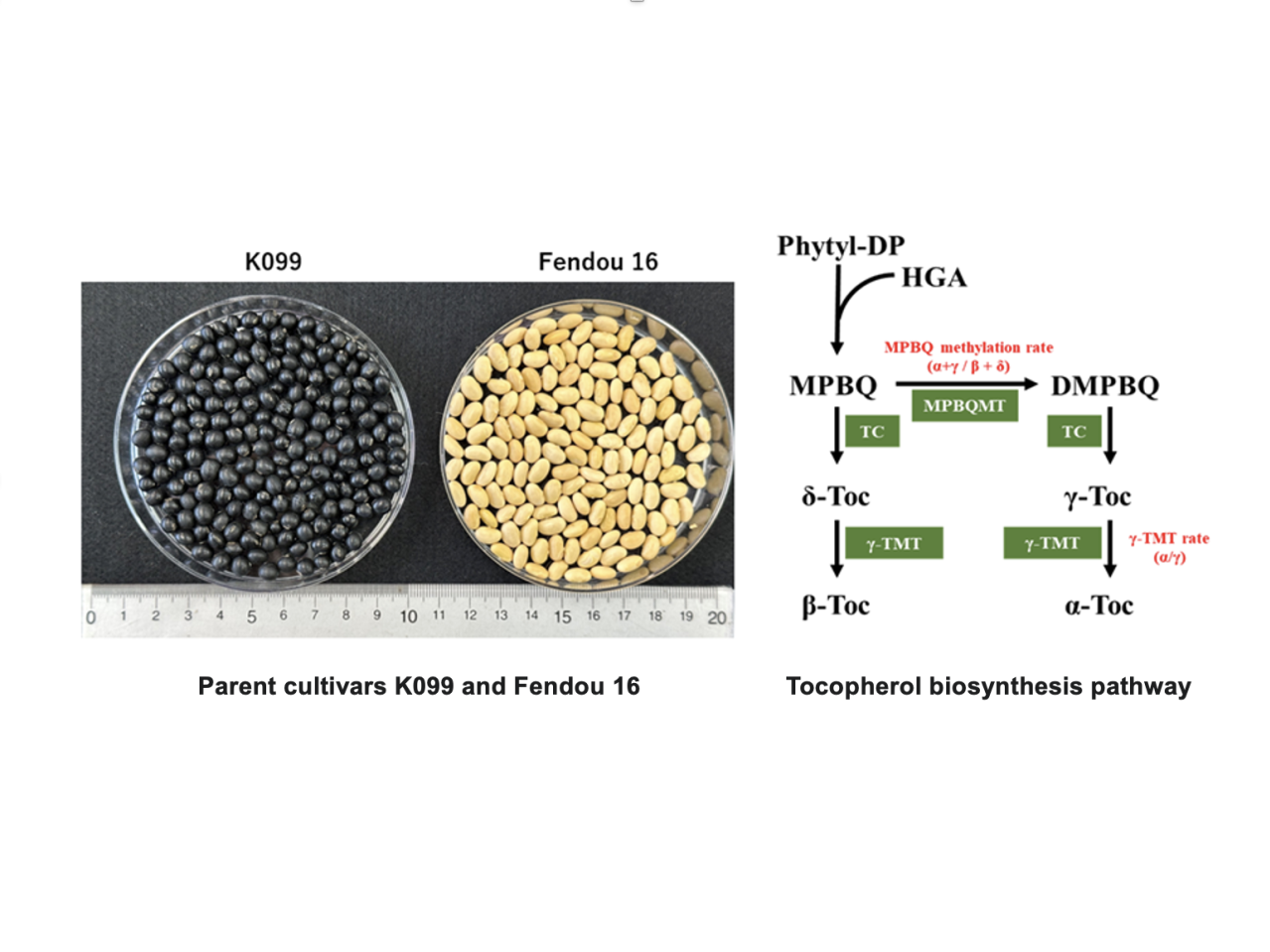Pick Up
786. Improving Soybean Functionality by Developing Soybean with High α-Tocopherol

786. Improving Soybean Functionality by Developing Soybean with High α-Tocopherol
Soybeans are one of the world's most important sources of protein and oil. Traditionally widely consumed in East and Southeast Asia, it has recently attracted attention as a nutraceutical or functional food. The functional and nutraceutical properties of soy are derived from isoflavones, soy saponins, carotenoids and tocopherols. Increasing the content of these components in soybeans is expected to increase the value of soybeans as a functional food.
Tocopherol is a fat-soluble antioxidant known as vitamin E. It has physiological functions in the prevention of lifestyle-related diseases such as cancer, atherosclerosis and cardiovascular diseases. Tocopherol is composed of four homologues (α, β, γ and δ), of which α-tocopherol has the highest vitamin E activity.
Although soybean has a higher total tocopherol content than other oilseed crops, the α-tocopherol content is less than 10% and γ-tocopherol, which has lower vitamin E activity, accounts for about 70% of the total tocopherol content. This is lower than in other oilseed crops (e.g. the α-tocopherol content of sunflower oil is 90%). Therefore, increasing the α-tocopherol content of soybean seed will have a great impact on expanding the use of soybean.
At JIRCAS, the DNA sequence of later generations produced by crosses between varieties with different tocopherol compositions were analyzed using next-generation sequencing to identify DNA regions on chromosomes (quantitative trait loci: QTL) involved in tocopherol biosynthesis in soybean seeds. Among them, a gene involved in methylation was identified as a causal candidate gene in the genomic region of the QTL cluster on chromosome 14. In addition, we generated a near-isogenic line (NIL) of the new QTL cluster and conducted validation experiments. The candidate gene was predicted to be a novel gene regulating MPBQ-MT in the soybean tocopherol biosynthesis pathway, which had not been identified before.
Breeding lines that accumulate the genes controlling the tocopherol biosynthetic pathway identified in this study and the genes promoting α-tocopherol biosynthesis (γ-TMT3, etc.) that have been identified so far, may lead to the development of highly functional soybean with a high α-tocopherol content by modifying the tocopherol biosynthetic pathway.
Reference
Park, C., Xu, D. et al. Identification of quantitative trait loci and candidate genes controlling the tocopherol synthesis pathway in soybean (Glycine max). Plant Breeding (2023). https://doi.org/10.1111/pbr.13104
Contributor: PARK Cheolwoo (Biological Resources and Post-harvest Division)
